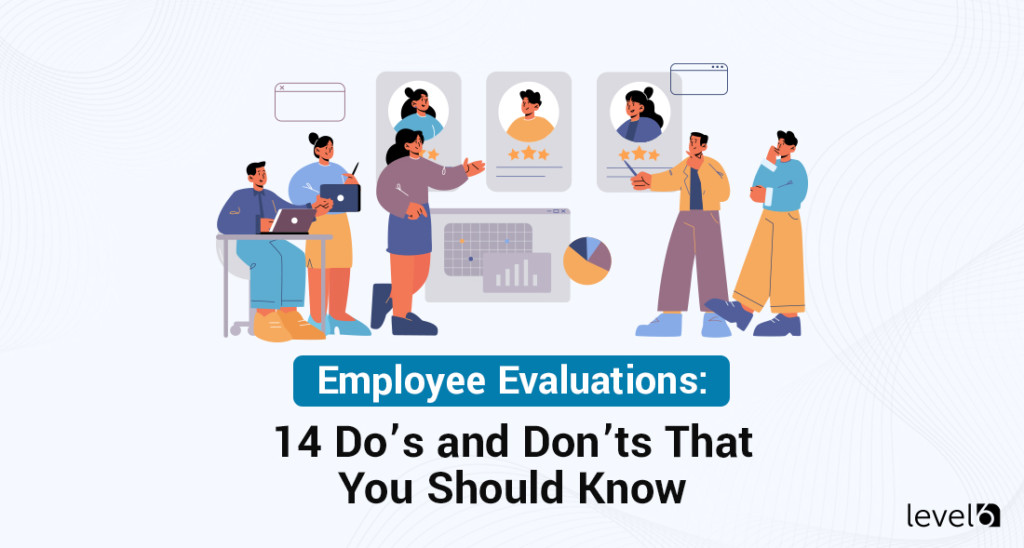How do big companies handle their buying needs so smoothly? They usually use Purchasing Cards or P-cards, which really make the entire buying process much easier. At first, you might think that P-Cards are just regular company credit cards. But they’re a bit different and much more helpful.
Are you interested in how these cards work and the benefits they can give you for your business? I have you covered. We’ll look at the job of P-Cards – how they work, their advantages, and some top tips for managing them.
Let’s jump in!
What Is a P-Card?
So, introducing P-Cards – or purchasing cards – based on what I’ve learned at work. A P-Card is like a company credit card that some employees carry. It’s used for purchases that are either too cheap or too regular to go through the usual purchasing process.
Typically, the people who get these cards are in charge of making purchases or spending on behalf of the company. The company carefully chooses these employees by looking at their jobs and their spending needs. It’s important for them to follow the company’s spending rules to make sure each buy is needed and stays within budget.
One benefit of P-Cards that I really value is the control they give. Companies can customize the rules for each card: setting spending limits and picking which sellers you can shop at, and even specifying when purchases can be made. This flexibility is a useful way to manage costs and stop any misuse of money.
Another benefit that gets apparent when you’re really involved in managing a purchasing department is how these cards simplify interactions with suppliers. Payments are faster, which cuts out the typical delays associated with old ways of paying. This efficiency helps keep a smooth relationship with suppliers, which will make sure timely deliveries and consistent service.
From what I’ve seen for myself, P-Cards really help with efficiency. They cut the need for complete expense reports for every small buy because all transactions are automatically listed on the card statement. This makes it easier for accounting, too.
Looking to learn more about an incentive, rebate
or reward program for your business?
Curious about costs?
Try our instant pricing calculator:
P-Cards in a company can really simplify the purchasing process and help with accountability and efficiency. This saves time and also improves compliance with financial rules, which makes the P-Card an important part of financial management strategies. But it’s important to watch adherence to the rules and make sure everyone uses the card responsibly to maximize their benefits.
How Do P-Cards Work
So, a P-Card – or Purchasing Card – is basically a special company credit card given to employees for purchasing goods and services. I really have a handle on how they work, from distribution to payment, and it’s clear why these cards are so great for managing business costs.
When a company starts handing out P-Cards they need to pick who gets one. This step is important as it determines who has the authority to spend company money and the rules they must follow. The next big step is training the cardholders on acceptable purchases, spending limits, and budget adherence. Useful training is important to make sure everyone follows the rules and avoids mistakes.
Once the cards are distributed and everyone is trained, employees can start making purchases. This process is usually smoother than traditional purchasing methods. To give you an example: if you need office supplies, you can avoid the hassle of multiple approvals and just buy what you need. Spending controls are in place to make sure all purchases are legitimate and within budget. From my experience logging each buy and keeping receipts or invoices is a reliable way to keep transparency and accountability.
The next phase is reconciliation – where spending is now reviewed to find any discrepancies between recorded and actual purchases. Companies pay close attention here to make sure all transactions comply with their spending policies.
The final step means making payments to the P-Card provider. It is usually handled by the finance team who will make sure the balance is paid on time to keep the company’s credit standing and avoid late fees and penalties.
Overall, P-Cards simplify purchasing and make expense monitoring easier. They add built-in controls like spending caps and approved vendor lists – they integrate well with expense management systems to help companies manage their costs.
Who Needs a P-Card?
When I think about all the sorts of jobs in a company that might need a P-Card, or Procurement Card, I realize these tools are important for improving procurement strategies. They prove really useful for managing those smaller, regular transactions that would otherwise slow down traditional purchasing methods.
So, how do companies find out who should get a P-Card? It largely depends on the employee’s job, their purchasing needs, and the frequency of their purchases. Based on my experiences with procurement, the perfect candidates for P-Cards are usually those who occasionally handle purchasing duties. This method can really speed up processes instead of relying on outdated methods.
Think about office managers or administrative staff – I would like to give you an example. These people usually need to replenish office supplies or organize services frequently – a P-Card can really simplify the process. A quick card swipe and they’re set – no more handling through a bunch of approvals or heaps of paperwork for every minor buy. In the same way, department heads and financial jobs like spending approvers or budget managers are also great matches. Their responsibilities usually be things like things like monitoring budgets and spending, so streamlined procurement processes are a logical step.
Here’s a practical example. Imagine a mid-sized tech company where each department head has a P-Card. They can quickly get parts for urgent projects or address immediate needs without the delays of traditional procurement methods. This quick access speeds up operations and also lets them focus more on strategic responsibilities than paperwork.
It’s important to remember that P-Cards don’t bypass needed purchasing or payment checks. They speed up purchases below a certain price threshold – typically for items costing less than $4,999, as per certain guidelines. This setup will make sure that while small, scheduled purchases are sped up, bigger acquisitions still go through the standard scrutiny and approval process.
Introducing P-Cards can turn how everyday purchases are managed within an organization. I’ve seen for myself how they can help with operational flexibility by reducing unnecessary administrative tasks and empowering employees to manage their department’s needs more. This makes it important for companies to rethink their procurement strategies and find out which jobs would most benefit from P-Cards.
Set Up P-Card Limits and Restrictions
Setting transaction limits and other controls on P-Cards is important to keeping financial dangers away in any organization. I’ve seen that setting these boundaries makes spending safer and also makes the process easier.
P-Cards give good flexibility in establishing specific spending controls like per-transaction limits and monthly caps – typically ranging from $1,999 to $2,999 per transaction and $5,000 to $20,000 monthly. These limits are very useful to prevent overspending and better manage your budget. If you need to make a large purchase for travel costs or venue bookings, you can request a temporary limit increase. This flexibility is important for smooth business operations and helps prevent unauthorized spending.
Adding restrictions on what can be bought and from whom also improves security. To give you an example, you can make sure the company card is only used with certain merchant category codes and approved vendors. This means money is only spent on pre-approved categories or vendors that match your business goals. Blocking purchases from unapproved vendors avoids unnecessary or impulse spending.
Organizations adopt all sorts of standard transaction limits – reflecting the differing controls needed across organizations. To give you an example, George Washington University has a limit of $3,500. UC Davis lets transactions up to $9,999.99. These figures show how each organization customizes its financial rules to match its size and risk management needs. For large costs like computers or software licenses, a pre-approval requirement will make sure these important purchases are closely reviewed and justified before spending occurs.
From my experience, applying these controls really makes a difference. They give you a framework that helps control spending and increases security. It’s amazing how some easy rules and limits can really ease your mind and make financial management easier.
Document and Track P-Card Transactions
When I think about P-Cards, the first thing that comes to my mind is how important it is to keep good records and make sure that everything matches up at the end of the month. Every charge made with a P-Card needs a receipt or invoice to back it up. At Sam Houston State University, they have a Procurement Transaction Log that’s super helpful for keeping track of all the purchases and making sure they align with university expectations. This setup has made the process easy – it eases tracking and auditing of P-Card transactions.
Handling the barrage of transactions can be a real headache, right? That’s why UC Davis uses systems like AggieExpense. It sorts out each expense by type and its place in the business and links it back to the Chart of Accounts. This sorting makes the reconciliation process easy and keeps financial reports tight.
At UC Davis, the rule is to keep P-Card paperwork for five years, and scanning is totally acceptable. This method is super helpful because it lets you pull up any transaction quickly, which is especially useful during audits or financial checks.
Besides, P-Cards let you track costs in real-time – pretty amazing, right? This means you can see the money going out as it happens and also keep an eye on if everyone is sticking to the policies all the time. This instant oversight can really cut down on budget mistakes or guideline slip-ups.
I found that having clear spending caps and keeping a regular watch on how P-Cards are used is really important. It makes sure that everyone is accountable and creates a sense of responsible spending.
Best Practices for P-Card Management
When you handle P-Cards, or procurement cards, in a company, setting up an easy yet strong policy that everyone understands is important. I’ve learned that simplicity can really simplify the procurement process, reduce financial dangers, and help with efficiency. Let me explain how I set up and manage a useful P-Card program.
First, it’s important to establish the core principles and flexible guidelines. I like focusing on achieving strategic benefits and maintaining accountability rather than sticking to rigid rules. I set spending limits based on time periods rather than individual transactions – encouraging cardholders to think about their purchases in the context of our overall business needs.
Adding technology is amazing as it reduces errors and eases the burden of accounting and reporting tasks. Applying mandatory electronic expense reporting and automated approval pathways makes the process easier and helps with oversight.
Expect audits every now and again. Schedule reviews of costs to ensure compliance with P-Card policies and point to areas where your strategies may need adjustments. I’m strict about needing complete documentation for all purchases and a complete review process. As a rule, I insist that every transaction has a receipt and is directly linked to a business useful.
Training is another important part of useful P-Card management. Making sure everyone who uses the cards and those approving the costs fully understands your policies is really important. I find that refreshing training periodically helps keep everyone alert, especially as policies evolve. Also, maintaining open communication is extremely important. It lets employees have the confidence to seek clarification on allowable costs before making decisions that don’t align with the policy.
Lastly, we must focus on security. Educating staff on the importance of keeping P-Card information secure and reporting suspicious activity immediately is important. With the increase in cyber threats, protecting our financial data is more important than ever.
How Custom Cards Can Benefit Your Organization
It’s pretty amazing to think how an easy P-Card can shake up the way a business runs. I remember feeling a bit scared when my company first switched to P-Cards – it felt like we were entering uncharted territory. But once we got the hang of it, the difference was like night and day. Switching from our old procurement methods to a P-Card system really changed the game. Making things much more flexible and secure. Sure, it needs some adjustment, and a good strategy is important. You also need to keep a tight handle on the guidelines to make sure everything goes hand in hand with the company’s policies. But the advantages, like improved compliance and cost management, are really worth it.
Here at Level 6, we’re great at making efficient tools and incentives work to your benefit. We are great at customizing incentive programs that help with engagement and productivity. Our solutions, like branded debit cards and unique rewards systems, are designed to meet your organization’s specific goals.
Why not take a solid step toward boosting your business’s efficiency and financial health? I recommend giving us a call to check out a free demo. You’ll get to see for yourself how our specific incentive programs can really increase your returns and help with your team’s performance. Let’s drive toward high performance and lasting growth together!

Claudine is the Chief Relationship Officer at Level 6. She holds a master’s degree in industrial/organizational psychology. Her experience includes working as a certified conflict mediator for the United States Postal Service, a human performance analyst for Accenture, an Academic Dean, and a College Director. She is currently an adjunct Professor of Psychology at Southern New Hampshire University. With over 20 years of experience, she joined Level 6 to guide clients seeking effective ways to change behavior and, ultimately, their bottom line.

 Demo
Demo






